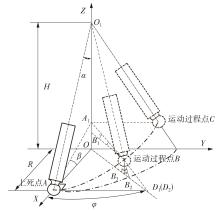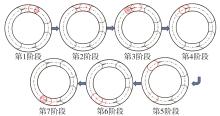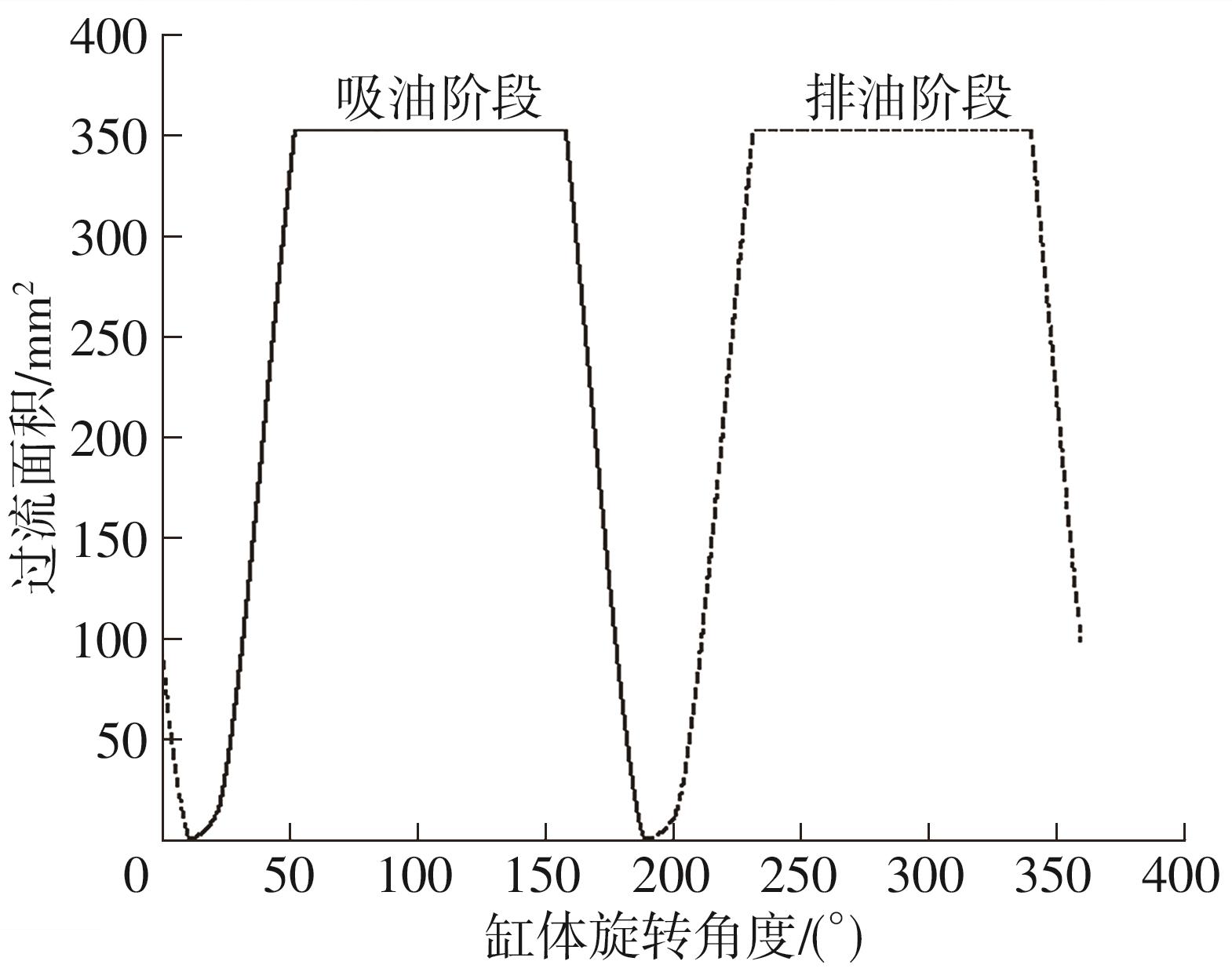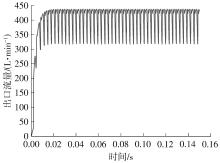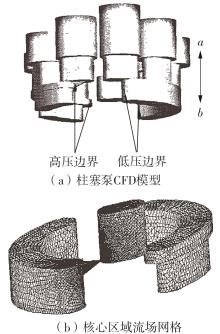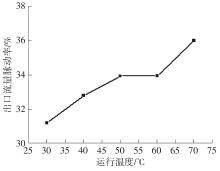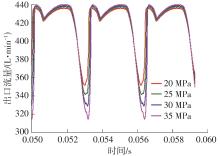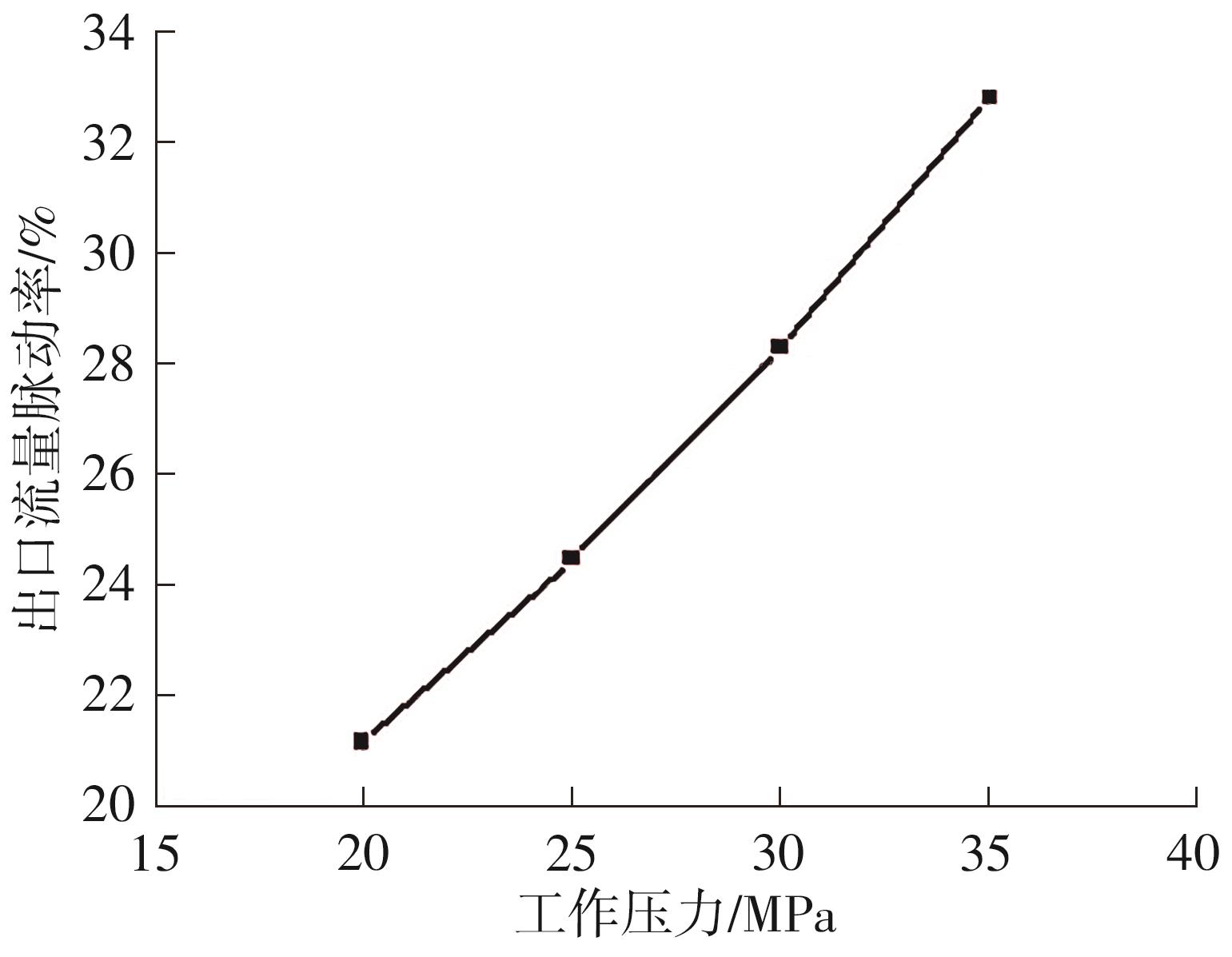Journal of South China University of Technology(Natural Science Edition) ›› 2024, Vol. 52 ›› Issue (2): 62-73.doi: 10.12141/j.issn.1000-565X.230206
• Energy,Power & Electrical Engineering • Previous Articles Next Articles
Flow Characteristics Analysis of Swash Plate Piston Pump Based on One-Dimensional Computational Model
ZHU Zhipeng1 TANG Yong1 SUN Yunwei1 YANG Guanggen1 BA Dechun2
- 1.China Helicopter Research and Development Institute,Jingdezhen 333001,Jiangxi,China
2.School of Mechanical Engineering & Automation,Northeastern University,Shenyang 110001,Liaoning,China
-
Received:2023-04-10Online:2024-02-25Published:2023-07-14 -
About author:朱志鹏(1989-),男,博士,高级工程师,主要从事特种流体机械设计分析、虚拟试验技术等研究。E-mail:zhuzhi_peng@126.com -
Supported by:the National Key R&D Program Major Scientific Instrument and Equipment Development Special Project(2016YFF0104000);the Aeronautical Science Foundation of China(201957002005)
CLC Number:
Cite this article
ZHU Zhipeng, TANG Yong, SUN Yunwei, et al. Flow Characteristics Analysis of Swash Plate Piston Pump Based on One-Dimensional Computational Model[J]. Journal of South China University of Technology(Natural Science Edition), 2024, 52(2): 62-73.
share this article
| 1 | 于立娟,王小东,张学成 .轴向柱塞泵流量脉动主动控制方法及仿真研究[J].西安交通大学学报,2013,47(11):43-47 . |
| YU Lijuan, WANG Xiaodong, ZHANG Xuecheng .Control and simulation of flow pulsation in axial plunger pump[J].Journal of Xi’an Jiaotong University,2013,47(11):43-47. | |
| 2 | 朱志鹏,汤永,孙云伟,等 .直升机虚拟疲劳试验中关键技术研究及探索[J].航空科学技术,2022,33(6):67-74. |
| ZHU Zhipeng, TANG Yong, SUN Yunwei,et al .Research and exploration of key technologies in helicopter virtual fatigue test[J].Aeronautical Science & Technology,2022,33(6):67-74. | |
| 3 | 梅火林,赵越 .虚拟疲劳试验技术的研究与探索[J].测控技术,2018,37(S2):108-109. |
| MEI Huo-lin, ZHAO Yue .Research and exploration of virtual fatigue test technology[J].Measurement & Control Technology,2018,37(S2):108-109. | |
| 4 | 温亚非 .A11VO-190型轴向柱塞泵恒功率控制特性研究[D].兰州:兰州理工大学,2011. |
| 5 | 杨军 .A11VO型轴向柱塞泵动态特性研究[D].兰州:兰州理工大学,2012. |
| 6 | 单乐,王金林,冀宏,等 .柱塞泵球面配流盘阻尼槽对流量脉动性的影响[J].液压与气动,2015(2):31-36. |
| SHAN Le, WANG Jin-lin, JI Hong,et al .Influence of relief groove of spherical valve plate on axial piston pump flow pipple[J].Chinese Hydraulics & Pneumatics,2015(2):31-36. | |
| 7 | 李理 .错配角对轴向柱塞变量泵斜盘力矩和流量输出特性的影响[D].兰州:兰州理工大学,2019. |
| 8 | 马德江 .基于CFD的A11VO轴向柱塞泵配流特性研究[D].兰州:兰州理工大学,2011. |
| 9 | 马吉恩 .轴向柱塞泵流量脉动及配流盘优化设计研究[D].杭州:浙江大学,2009. |
| 10 | 张浩,许佳音 .K3V柱塞泵的CFD分析与模拟[J].机床与液压,2014,42(16):67-71. |
| ZHANG Hao, XU Jiayin .CFD analysis and simula-tion of K3V axial piston pump[J].Machine Tool & Hydraulics,2014,42(16):67-71. | |
| 11 | 吴小锋,刘春节,干为民,等 .典型柱塞泵动态流固耦合解析与试验研究[J].机床与液压,2015,43(3):108-111. |
| WU Xiaofeng, LIU Chunjie, GAN Weimin,et al .Fluid-structure dynamic interaction analysis and experimental study of typical piston pump[J].Machine Tool & Hydraulics,2015,43(3):108-111. | |
| 12 | 熊小平 .A11VO轴向柱塞泵配流特性的研究[D].成都:西南交通大学,2010. |
| 13 | 钟鸣 .A4V型轴向柱塞泵的动态特性分析[D].哈尔滨:哈尔滨工业大学,2014. |
| 14 | XU B, SONG Y C, YANG Y Y .Investigation of pre-compression volume on flow ripple reduction of a piston pump[J].Chinese Journal of Mechanical Engineering,2013,26(6):1259-1266. |
| 15 | 王毅翔 .轴向柱塞泵配流盘阻尼槽特性分析及优化设计[D].杭州:浙江大学,2014. |
| 16 | 韩建磊,崔凯,杨国玺,等 .斜盘式轴向液压柱塞泵流量脉动特性分析[J].内燃机与动力装置,2019,36(4):47-51. |
| HAN Jianlei, CUI Kai, YANG Guoxi,et a1 .Analysis of flow pulsation characteristics of swash plate axial hydraulic piston pump[J].Internal Combustion Engine&Powerplant,2019,36(4):47-51. | |
| 17 | 李晶,陈昊,訚耀保 .轴向柱塞泵柱塞副偏心状态油膜特性分析[J].华南理工大学学报(自然科学版),2016,44(10):30-35,42. |
| LI Jing, CHEN Hao, YIN Yao-bao .Oil characteristic analysis of piston-cylinder interface in axial piston pump with radial micro-motion[J].Journal of South China University of Technology(Natural Science Edition),2016,44(10):30-35,42. | |
| 18 | 侯亮,赖伟群,崔凯,等 .轴向柱塞马达平面配流副油膜润滑特性建模及分析[J].华南理工大学学报(自然科学版),2021,49(2):99-109. |
| HOU Liang, LAI Weiqun, CUI Kai,et al .Modeling and analysis of oil film lubrication characteristics of valve-plate pair in axial piston motor[J].Journal of South China University of Technology(Natural Science Edition),2021,49(2):99-109. | |
| 19 | 潘阳,李毅波,黄明辉,等 .双联轴向柱塞泵配流盘优化与流量脉动特性分析[J].农业机械学报,2016,47(4):391-398. |
| PAN Yang, LI Yibo, HUANG Minghui,et al .Valve plate improvement and flow ripple characteristic analysis for double compound axial piston pump[J].Transactions of the Chinese Society for Agricultural Machinery,2016,47(4):391-398. | |
| 20 | 郭锋,高永强,郑韦 .轴向柱塞泵的流量脉动对压力脉动的影响及分析[J].山东科技大学学报(自然科学版),2007,26(5):49-52. |
| GUO Feng, GAO Yongqiang, ZHENG Wei .Influence of the flux pulsation on pressure pulsation of the axial piston pump and its analysis[J].Journal of Shandong University of Science and Technology (Natural Science),2007,26(5):49-52. | |
| 21 | 李静 .基于CFD的轴向柱塞泵配流特性研究[D].杭州:浙江大学,2008. |
| [1] | XIA Yimin, LI Zhenghui, TAN Shunhui, et al.. Influence of Oil Characteristics on Flow Pulsation of Axial Piston Pump of Large Displacement Under Solid-Liquid-Temperature Coupling [J]. Journal of South China University of Technology(Natural Science Edition), 2023, 51(9): 44-55. |
| [2] | KANG Lan HONG Shutao. Experimental Investigation on Fatigue Properties of Q690D High Strength Steel [J]. Journal of South China University of Technology(Natural Science Edition), 2021, 49(8): 35-42. |
| [3] | WAN Yipin SONG Xuding YUAN Zhengwen. Fatigue Test and Fatigue Reliability Evaluation of Loader Working Device [J]. Journal of South China University of Technology (Natural Science Edition), 2020, 48(8): 108-114. |
| [4] | LIANG Jia SONG Xuding Lü Pengmin WEI Yongxiang Lü Chang. Fatigue Test and Fatigue Reliability Evaluation of Wheel Loader Drive Axle [J]. Journal of South China University of Technology (Natural Science Edition), 2018, 46(7): 116-122. |
| [5] | Yuan Miao-miao Zhang Xiao-ning Chen Wei-qiang Zhang Shun-xian. Investigation and Verification of Fatigue Failure Criterion of Asphalt Mixtures [J]. Journal of South China University of Technology (Natural Science Edition), 2013, 41(4): 96-101. |
| Viewed | ||||||
|
Full text |
|
|||||
|
Abstract |
|
|||||




